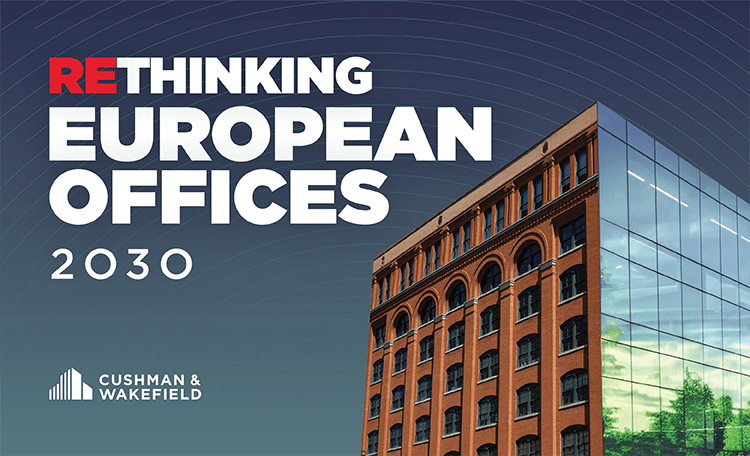More large-volume transactions – portfolios are also increasingly changing hands
The German commercial property investment market continued to hold its own in a challenging geopolitical environment in the third quarter of 2025. According to Cushman & Wakefield, the transaction volume totalled around €16.1 billion in the period from January to September 2025. This represents a stabilisation compared to the same period last year. This continues the trend seen in the first half of the year, which was characterised by a mixture of cautious optimism and structural challenges.
- Top 7 markets at €8.16 billion, only 6 per cent below the previous year's figure – Hamburg with strong growth of 145 per cent
- International investor share rises to 47 per cent (€7.63 billion, +17 per cent compared to Q1-Q3 2024)
- Retail property remains the strongest asset class with a 26 per cent market share (€4.19 billion)
- Hotel properties grew by more than two-thirds to €1.58 billion
Economic policy has not yet met expectations
Current forecasts for Germany's gross domestic product (GDP) in 2025 paint a picture of economic stagnation. In comparison, the eurozone appears more robust. The European Central Bank (ECB) forecasts growth of 0.9 per cent for 2025. The recovery in the eurozone is mainly driven by rising real wages, stable labour markets and favourable financing conditions.
"There are many reasons for the weak economic development in Germany. One key factor is new trade barriers, in particular tariffs imposed by the US, which are weighing on Germany's export-oriented industry. Added to this are structural challenges such as demographic change, high energy prices, reluctance to invest and continued weakness in residential construction. Private consumption is also recovering only slowly, despite rising real incomes," says Simon Jeschioro, Head of Capital Markets & Investment Advisory Germany at Cushman & Wakefield.
The German government has so far responded cautiously in terms of economic policy. Only moderate fiscal stimulus is planned for 2025. A significantly more expansionary fiscal policy is not planned until 2026, with measures such as reducing the electricity tax, increasing the commuter allowance and increasing investment in infrastructure and defence. These measures could lead to a noticeable upturn from 2026 onwards. Government economic measures can therefore be seen as a decisive lever for medium-term economic recovery.
"Monetary policy developments in Europe have so far been characterised by an easing of interest rate policy by the European Central Bank. With the latest ECB Governing Council decision on 11 September 2025, the main refinancing rate remains stable at 2.15 per cent. At the same time, the risk-free interest rate, i.e. the yield on 10-year German government bonds, appears to have stabilised at around 2.7 per cent. Historically speaking, the risk-free interest rate is at a low level. This has also led to a slight improvement in financing conditions. We are therefore seeing increasing financing opportunities, particularly for core and value-add strategies," explains Simon Jeschioro.
"For institutional investors, this means that return expectations have been recalibrated, as the spread margin to the risk-free interest rate is lower. Overall, the new market cycle is characterised by an environment in which real estate investments are once again more attractive – but for the time being, investments are being made with greater selectivity and regional differentiation. Accordingly, there is confidence that the market will turn around in 2026 – provided that political and regulatory conditions improve and government support programmes take effect," says Alexander Waldmann, Team Leader Research & Insight Germany at Cushman & Wakefield.
Transaction volume up slightly in the third quarter
This is reflected in the current transaction volume. Investments in the order of €5.90 billion were recorded in the third quarter, an increase of 12 per cent compared to the previous year (Q3 2024: €5.28 billion). For the first three quarters of 2025, the commercial transaction volume totals €16.1 billion (down 2 per cent).
Alexander Waldmann: "We are seeing the beginning of greater market momentum, which is also reflected in larger deals. Several large office sales, large retail properties and several portfolios were recorded." These include the "Helix Portfolio", which was sold by Palmira and Nuveen to Starwood Capital for approximately £350 million and comprises 12 logistics properties. Blackstone's Keystone Portfolio, comprising 17 hotels and over 2,000 rooms, which was sold to Event Hotels, also stands out. In the retail sector, the Gropius Passage in Berlin was sold to Hayfin Capital Management for approximately €240 million.
Asset classes: Retail in the lead – offices slightly up, hotels up strongly
For the entire period from January to September 2025, retail properties remained the strongest asset class, accounting for 26 per cent of the total volume. The transaction volume amounted to €4.19 billion (+17 per cent compared to Q1-Q3 2024), driven not only by portfolio transactions but also by larger deals involving shopping centres and commercial buildings.
Office properties held their own with a volume of €3.84 billion, representing a share of 24 per cent and an increase of 5 per cent compared to the first three quarters of 2024. Demand focused on core and, to some extent, value-add products in the top 7 cities, which accounted for 80 per cent of office investments.
Logistics and industrial properties recorded a result of €3.48 billion (22 per cent of the transaction volume). This asset class remains attractive to institutional investors due to its long-term growth prospects. Hotel properties also gained ground, reaching a volume of €1.58 billion (10 per cent market share), an increase of 68 per cent over the previous year's level.
Transaction volume in the top 7 markets: Mixed development
The transaction volume in the top 7 markets amounted to €8.16 billion in Q1-Q3 2025, representing a 51 per cent share of the total volume. While Hamburg (up 145 per cent) outperformed the other markets except Berlin with a significant increase to €1.82 billion, Munich (down 26 per cent) with €1.51 billion, Frankfurt (down 47 per cent) Cologne (down 32 per cent) and Düsseldorf (down 11 per cent) each recorded around €0.7 billion, some of which was a significant decline in activity. In contrast, the transaction volume in Berlin (up 1 per cent) at €2.45 billion and in Stuttgart (down 4 per cent) at approximately €270 million remained virtually stable compared to the previous year.
Outside the top seven markets, demand remained stable once again. The transaction volume in B and C cities amounted to €7.94 billion, which is on a par with the previous year's level.
Overall, commercial transaction activity is once again somewhat more international than it was a year ago. At €7.63 billion, international investors generated a 17 per cent higher transaction volume than in the same period last year. Accordingly, their market share rose to 47 per cent after the first three quarters of 2025. German investors are responsible for an investment volume of €8.47 billion.
Yields largely stable
Prime yields remained largely stable in the third quarter of 2025. For office properties in the top seven markets, the average yield was 4.90 per cent, with the lowest values in Munich (4.60 per cent) and Berlin and Hamburg (4.80 per cent). The highest prime office yields were again observed in Düsseldorf and Cologne (5.10 per cent each).
For inner-city commercial buildings in prime locations, the average prime yield remained unchanged at 4.46 per cent, while logistics properties continued to be valued at 4.50 per cent.






